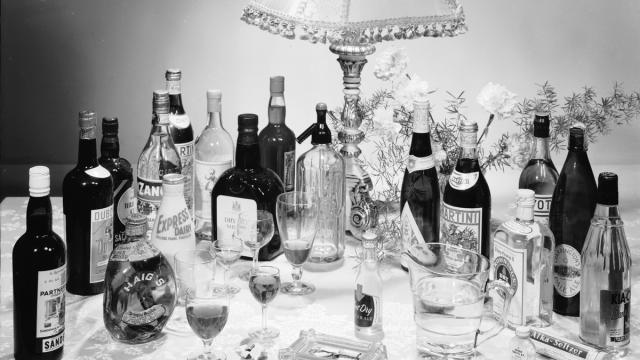After alcohol prohibition was repealed in 1933, many American distillers had a problem: they didn’t have enough old booze lying around. It’s possible to churn out a barrel of whiskey in just a few days, but you need at least 3 years of ageing for many people to consider it any good. The “time travelling” scientists of the Great Depression were going to fix all that.

Here in the 21st century, entrepreneurs are doing their best to artificially age whiskey using science. It’s a neat trick that could help fend off shortages of your favourite brown liquids. But back in the 1930s, there was a particular sense of urgency around the issue.
The 13-year dry spell from 1920-33 (which was hardly dry, of course) meant that most American manufacturers weren’t producing drinks like whiskey — a deliciously intoxicating beverage that has to be aged in barrels, not in the bottle. So scientists had to develop ways to artificially and rapidly age alcohol.
The September 1934 issue of Everyday Science and Mechanics explained the research that was going on at the time:
To accomplish 10 or 20 years’ of natural chemical activity in a week is what the research chemists of the liquor industry are trying. There is a large demand for “aged” liquor to be met with new. One method of speeding it up is to bubble ozone through it; another to pass electricity through it as it leaves the still. Yet another is to cause “a miniature Niagara Falls of liquor” to flow over ultra-violet lamps. Lead, silicon, uranium and cerium “catalyes” are used to beat Father Time.
But this wasn’t just some fantasy of the popular press. Serious chemists really were looking into the problem. The April 10, 1934 issue of Chemical Engineering News ran an article about the post-Prohibition interest in rapidly ageing alcohol.
Titled “Artificial Ageing of Spirits,” the paper broke down the four different ways that scientists were trying to make bourbon-soaked “time travel” a reality:
- Treatment with air, oxygen, or ozone
- Exposure to actinic [ultraviolet] rays
- Electrolytic treatment
- Use of catalysts like charcoal
Today, the exact methods of artificial ageing are a closely guarded secret for distilleries like Cleveland Whiskey in Ohio. But judging from what we do know about their processes, they’re probably using many of the same techniques developed by chemists 80 years ago.
Rapidly ageing alcohol using Depression-era methods may not be a real form of time travel, but it’ll have to do for now.
Image: Photo of alcohol bottles circa 1955 from Getty; “Time Machine” news item scanned from the September 1934 issue of Everyday Science and Mechanics
